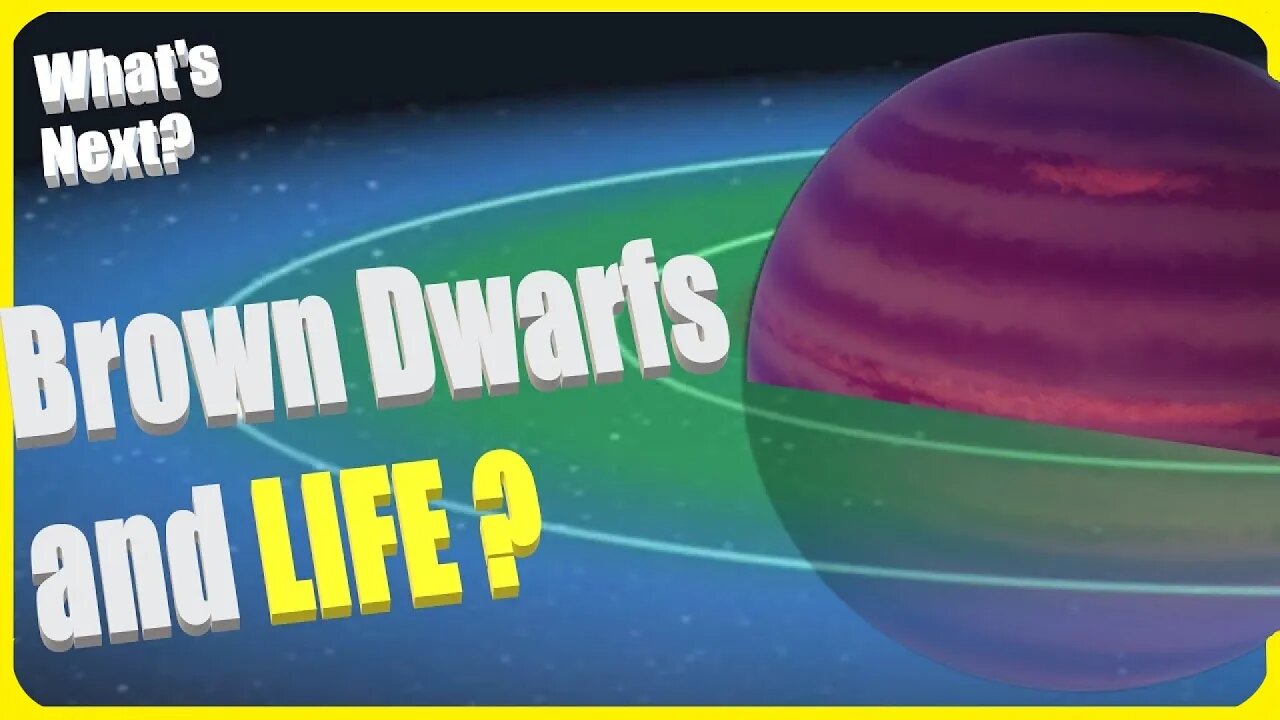Premium Only Content

Can BROWN DWARF Solar Systems Support Life?
WhatsNextVids on RUMBLE - https://rumble.com/user/WhatsNextVids
What's Next? on ODYSEE - https://odysee.com/@WhatsNext:5?view=content
Whats.Next on BITCHUTE - https://www.bitchute.com/channel/Yq06nyAcliTf/
Patreon - https://www.patreon.com/user?u=37594401
Buy Me A Coffee? - https://www.buymeacoffee.com/whats.next
Donate With Cash App - https://cash.app/$YTpayments
Get Mentioned In Future Videos By Joining PATREON For As Little As $5 A Month
(and gain access to DOZENS of videos!)
Support Direct Improvements To The Channel With BUY ME A COFFEE
Or Make Direct Contributions With No Strings Attached With CASH APP
WANT MORE GREAT CONTENT?
SUBSCRIBE TO THESE GREAT CHANNELS!
Vega Astro - https://www.youtube.com/channel/UCejLQCRfKR1XAmDeRRv3ifA
Terran Space Academy - https://www.youtube.com/channel/UCGzgxO2YKjk9yYKLwBjyeVA
Mars Matters - https://www.youtube.com/channel/UCPFLOxf5-AgE0QlaXhzol_Q
Brown Dwarf study - https://iopscience.iop.org/article/10.3847/1538-4357/ab5b13
Brown Dwarves Dwarf Brown dwarfs are substellar objects that are not massive enough to sustain nuclear fusion of ordinary hydrogen (1H) into helium in their cores, unlike a main-sequence star. Instead, they have a mass between the most massive gas giant planets and the least massive stars, approximately 13 to 80 times that of Jupiter (MJ). However, they can fuse deuterium (2H), and the most massive ones ( 65 MJ) can fuse lithium (7Li).
Astronomers classify self-luminous objects by spectral class, a distinction intimately tied to the surface temperature, and brown dwarfs occupy types M, L, T, and Y. As brown dwarfs do not undergo stable hydrogen fusion, they cool down over time, progressively passing through later spectral types as they age.
Despite their name, to the naked eye, brown dwarfs would appear in different colors depending on their temperature. The warmest ones are possibly orange or red, while cooler brown dwarfs would likely appear magenta to the human eye. Brown dwarfs may be fully convective, with no layers or chemical differentiation by depth.
Though their existence was initially theorized in the 1960s, it was not until the mid-1990s that the first unambiguous brown dwarfs were discovered. As brown dwarfs have relatively low surface temperatures, they are not very bright at visible wavelengths, emitting most of their light in the infrared. However, with the advent of more capable infrared detecting devices, thousands of brown dwarfs have been identified. The nearest-known brown dwarfs are located in the Luhman 16 system, a binary of L- and T-type brown dwarfs at about 6.5 light-years (2.0 parsecs). Luhman 16 is the third closest system to the Sun after Alpha Centauri and Barnard's Star.
Brown Dwarves Dwarf Brown dwarfs are substellar objects that are not massive enough to sustain nuclear fusion of ordinary hydrogen (1H) into helium in their cores, unlike a main-sequence star. Instead, they have a mass between the most massive gas giant planets and the least massive stars, approximately 13 to 80 times that of Jupiter (MJ). However, they can fuse deuterium (2H), and the most massive ones ( 65 MJ) can fuse lithium (7Li).
Astronomers classify self-luminous objects by spectral class, a distinction intimately tied to the surface temperature, and brown dwarfs occupy types M, L, T, and Y. As brown dwarfs do not undergo stable hydrogen fusion, they cool down over time, progressively passing through later spectral types as they age.
Despite their name, to the naked eye, brown dwarfs would appear in different colors depending on their temperature. The warmest ones are possibly orange or red, while cooler brown dwarfs would likely appear magenta to the human eye. Brown dwarfs may be fully convective, with no layers or chemical differentiation by depth.
Though their existence was initially theorized in the 1960s, it was not until the mid-1990s that the first unambiguous brown dwarfs were discovered. As brown dwarfs have relatively low surface temperatures, they are not very bright at visible wavelengths, emitting most of their light in the infrared. However, with the advent of more capable infrared detecting devices, thousands of brown dwarfs have been identified. The nearest-known brown dwarfs are located in the Luhman 16 system, a binary of L- and T-type brown dwarfs at about 6.5 light-years (2.0 parsecs). Luhman 16 is the third closest system to the Sun after Alpha Centauri and Barnard's Star.
Fun Fact: The correct plural form of dwarf in this case is dwarfs.
Dwarves is used in reference to the fantasy creatures 👍
-
 2:11:09
2:11:09
Steven Crowder
5 hours ago🔴 Just Release the Damn Epstein Files - End It Once and For All
420K302 -
 10:06
10:06
VSOGunChannel
2 hours ago $0.08 earnedCongress Tells ATF to Stop Doing the National Firearms Act
611 -
 30:40
30:40
The Boomer Effect
17 hours agoNo More Beardos
11 -
 1:08:00
1:08:00
Sean Unpaved
3 hours agoMike Vrabel Has Restored The Patriot Way! | UNPAVED
15.1K2 -
 2:04:53
2:04:53
Side Scrollers Podcast
4 hours agoHasan Piker Goes FULL Propaganda + Kirsche & Craig Make “The List” + More | Side Scrollers
18.4K2 -
 2:06:23
2:06:23
Nerdrotic
3 hours ago $2.76 earnedNerdrotic Nooner 533
28.6K1 -
 LIVE
LIVE
GritsGG
3 hours ago#1 Most Warzone Wins 3987+!
39 watching -
 1:08:44
1:08:44
The Rubin Report
4 hours agoPress Goes Silent When Told Ugly Facts of Damage Done by Democrat Shutdown
44.4K60 -
 2:04:14
2:04:14
Nikko Ortiz
4 hours agoVETERAN DAY FAILS... | Rumble LIVE
41.4K3 -
 20:08
20:08
Professor Nez
4 hours ago🔥 A Room Full of Democrats with Scott Wiener SCOLDED a Black Lesbian Pouring Her Heart Out!
23.3K15